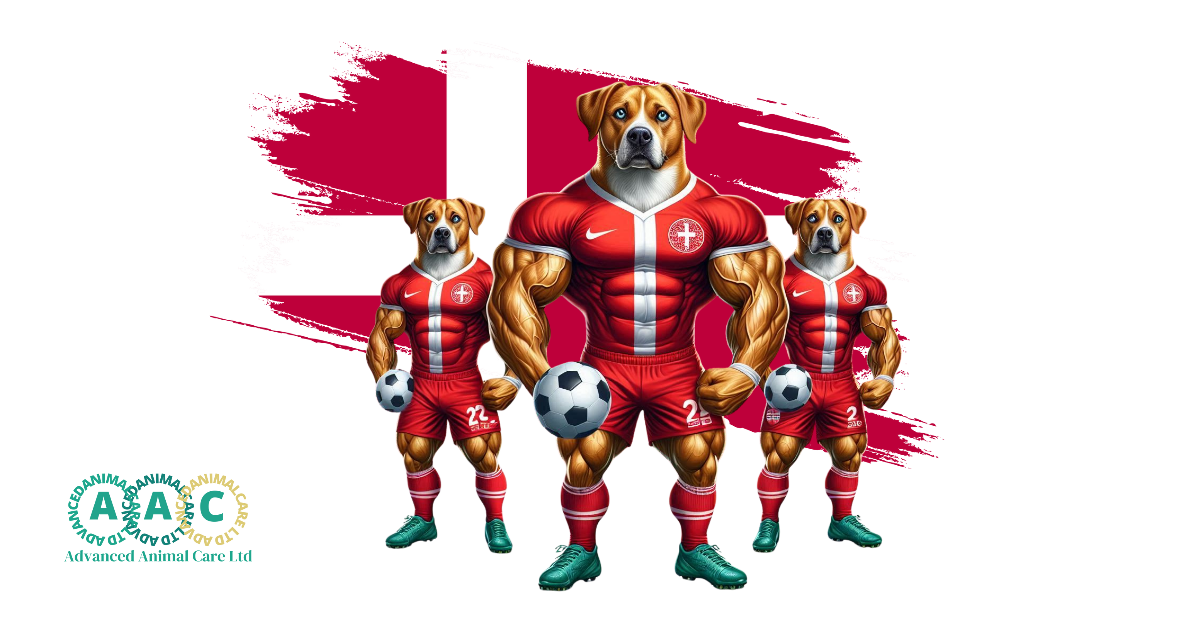
Unleashing the Legacy of Danish Dogs: History, Breeds, Traditions, and More
- emmaleighdean
- Jul 12
- 3 min read
Denmark, a land of Viking heritage, fairy tales, and innovative design, is also home to a rich canine history. From ancient farm companions to modern sporting stars, Danish dogs have played a vital role in the country’s culture and daily life. This blog explores the history of dogs in Denmark, the first known breeds, old traditions, the purpose of dog breeding, extinct breeds, popular and traded breeds, fascinating facts, famous stories, and the role of dog sports clubs in Denmark.

The History of Dogs in Denmark
Dogs have been integral to Danish life for centuries, with evidence of their presence dating back to the Viking Age (circa 800–1100 CE). Archaeological finds, such as dog remains in Viking settlements, suggest dogs were valued as companions, hunters, and guardians. The earliest dogs in Denmark were likely descendants of ancient Nordic wolves, domesticated by early settlers for practical purposes. The Greenland Dog, used by the Thule people in Greenland (part of the Kingdom of Denmark), is one of the oldest known breeds, with roots tracing back 4,000 years to ancestors of the extinct Taimyr wolf. These dogs were essential for survival, pulling sleds and aiding in hunting in harsh Arctic conditions.
The Danish-Swedish Farmdog, another ancient breed, likely originated in the Skåneland region (southern Sweden and eastern Denmark) during the Viking era. Known as the “rottehund” (rat dog), it was a versatile farm worker, guarding livestock and catching vermin. Its history reflects Denmark’s agrarian past, where dogs were indispensable partners.

Greenland Dog

Keep Your dog fit and healthy. Visit our supplements shop HERE
For Muscle and Performance Supplements HERE
The First Dog Breed: Danish-Swedish Farmdog
The Danish-Swedish Farmdog is considered one of Denmark’s earliest distinct breeds, with origins in the 1700s or earlier. Historically called the Danish Pinscher or Skånsk Terrier, this small, compact dog was bred for its agility, intelligence, and versatility. Used for ratting, herding, and guarding, it thrived on Scandinavian farms. By the 1870s, industrialization reduced the need for such dogs, nearly driving the breed to extinction. Thanks to the efforts of the Danish and Swedish Kennel Clubs in the 1980s, particularly dog fancier Jytte Weiss, the breed was revived and officially recognized in 1987. Its recognition by the American Kennel Club (AKC) in 2011 marked its global resurgence.
Old Traditions of Dog Breeding in Denmark
Dog breeding in Denmark has long been tied to functionality and cultural heritage.
Traditional practices included:
Selective Breeding for Work: Farmers and hunters bred dogs for specific tasks, such as vermin control (Danish-Swedish Farmdog), hunting (Old Danish Pointer), or guarding estates (Broholmer). Only the strongest, healthiest dogs were bred, ensuring resilience.
Viking Companionship: Vikings valued dogs as loyal companions, often burying them with their owners as symbols of loyalty. Dog imagery appears in Norse art, reflecting their cultural significance.
Kennel Club Standards: Since the establishment of the Dansk Kennel Klub in 1897, Denmark has upheld strict breeding standards to preserve native breeds’ health and traits, emphasizing responsible ownership.

Treat your dog to a discounted priced Premium collar and lead HERE
Purpose of Dog Breeding in Denmark
Historically, Danish dogs were bred for practical purposes, reflecting the country’s rural and hunting traditions:
Hunting: The Old Danish Pointer (Gammel Dansk Hønsehund), developed in the 1700s by Morten Bak, was bred for tracking game, particularly birds, with its Bloodhound-like nose.
Guarding: The Broholmer, a Mastiff-type dog, was bred in the Middle Ages to protect manors and hunt stags, prized for its strength and loyalty.
Vermin Control: The Danish-Swedish Farmdog excelled at catching rats and mice, protecting crops and livestock.
Sledding: The Greenland Dog was bred for endurance, pulling sleds in Arctic conditions, as seen in Roald Amundsen’s Antarctic expedition.
Companionship: Today, many Danish breeds, like the Danish Spitz, are bred as family pets, valued for their friendly, adaptable nature.
Modern breeding focuses on preserving genetic diversity and health, with the Danish Kennel Club promoting responsible practices to prevent overbreeding and maintain breed standards
Extinct Danish Dog Breeds
While no fully extinct Danish breeds are widely documented, several faced near-extinction:
Danish-Swedish Farmdog: By the 1980s, industrialization had reduced its population to critical levels. Revival efforts by Jytte Weiss and the Danish/Swedish Kennel Clubs saved it.
Broholmer: This breed nearly vanished during World War II due to economic hardship and reduced breeding. Danish enthusiasts, including the Danish Kennel Club, revived it post-war.
Danish Spitz: Known as the “Samoyed-Spitz” or “Greenland-Spitz,” it remains rare and unrecognized by major kennel clubs like the AKC or FCI, putting it at risk of fading.
These near-misses highlight Denmark’s commitment to preserving its canine heritage through dedicated breeding programs.










Comments